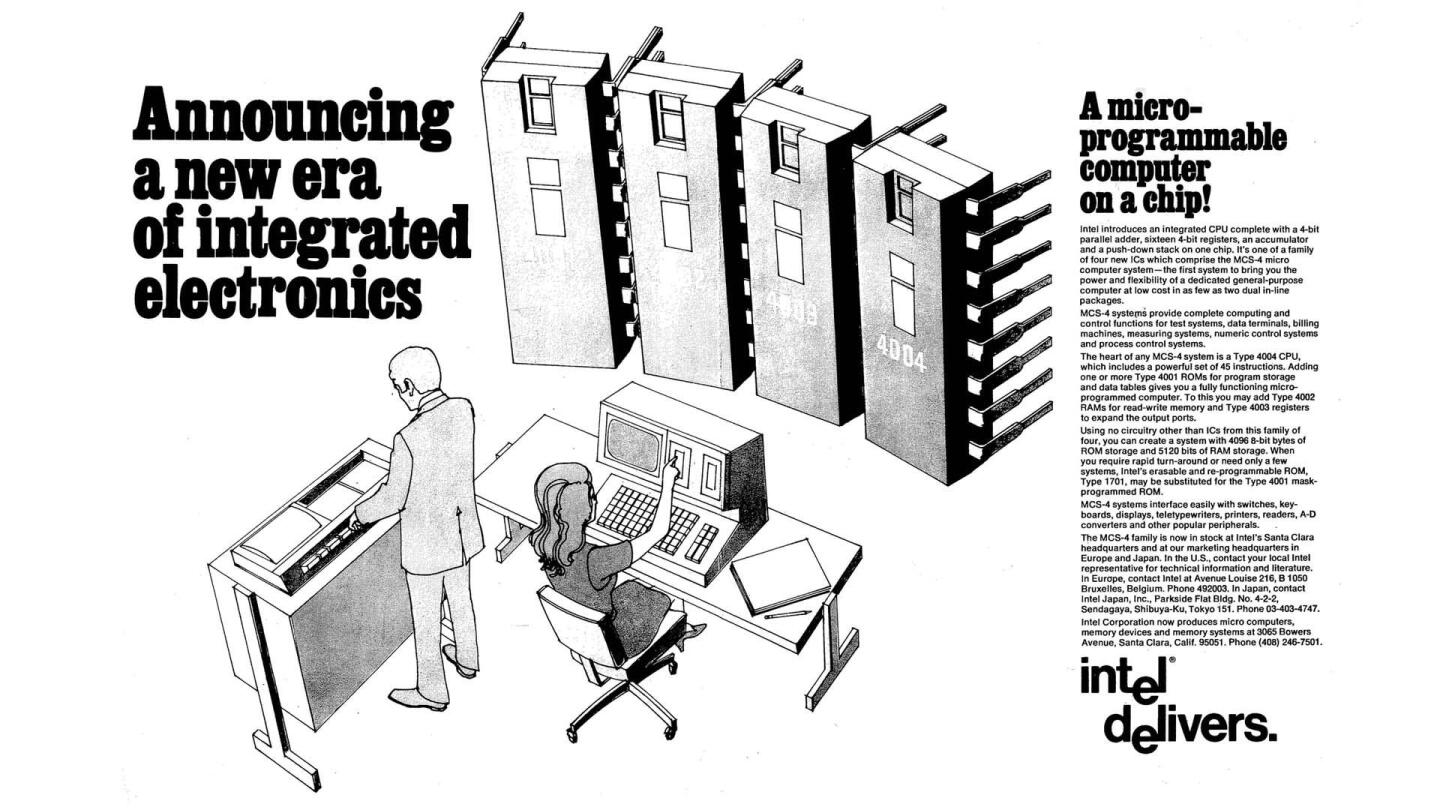This month marks the 50th anniversary of Intel’s 4004 processor, the first commercially available microprocessor built on a single chip. Originally designed for a Japanese desk calculator, it helped spark the personal computer revolution.
In November 1971, an advertisement appeared in Electronic News with the tagline, “Announcing a new era in integrated electronics.” This marked the debut of the Intel 4004 general-purpose programmable processor chip on the market.
It was originally conceived of in 1969 as a way of meeting a contract for Intel to produce 12 custom chips for the Nippon Calculating Machine Corporation’s Busicom 141-PF engineering prototype calculator. Over the next two years, an Intel team led by Marcian “Ted” Hoff, Stan Mazor, and Federico Faggin reduced this to four chips, one of which was the 4004. The result was so impressive that Intel secured the rights to put it on the general market.

Intel
What made the 4004 so different was that this was the first time a complete Central Processor Unit (CPU) was built into one chip. Previously, CPUs would have been made up of multiple integrated circuits or tens or hundreds of individual transistors. Instead, the 4004 contained 2,300 transistors on a chip the size of a fingernail and assembled in a new random logic design.
The 4004 had only 16 pins, so it had only a 4-bit bus, and a 740-kHz maximum clock rate that allowed it to process 92,600 instructions per second. Still, this one chip was as powerful as the first computers built in 1946 that took up large rooms.
The 4004 sparked generations of rapid innovation that have resulted in not just computers on a chip, but chips in smartphones that can stroll past the most powerful supercomputers of the 1970s and 1980s. As a point of perspective, where the 4004 had 2,300 transistors, a modern chip can have over 50 billion.
“[Looking back at] 1970, it was clear that microprocessors would change the way that we design systems, switching from using hardware to software instead. But the speed with which microprocessors developed over time and were adopted by the industry was really surprising,” says Faggin.
Source: Intel
Source of Article